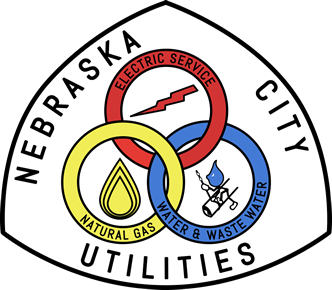KITCHEN TIPS
- Preheat oven only for baked foods that require precise temperatures such as breads, cookies, and cakes. Casseroles, roasts, and broiled foods don’t need to go into a warm oven.
- Vacuum the refrigerator coils twice a year. Dirty coils make the refrigerator work harder and use more energy.
- Turn your oven off about five minutes before cooking time is complete.
- When a 1/4 inch layer of frost has accumulated, it is time to defrost. Frost acts as an insulator and forces the appliance to work harder.
- Clean the lint filter after every load of laundry. This decreases the drying time and increases the airflow.
- Use a covered pan to boil water. It will use less energy and is much faster.
- Use microwave ovens to save energy and reduce cooking time.
- Consider washing and drying dishes by hand, rather than using a dishwasher.
When cooking – don’t continually open oven door to check on food, you lose 20% of your heat every time the door is opened.
COOL TIPS FOR SUMMER
- Spring is a great time for pruning trees. Be especially careful not to let metal ladders or trimmers contact overhead lines.
- Set your air conditioners thermostat at 78 degrees F or higher in the summer.
- Use a fan to circulate a breeze. Fans cost less to run than air conditioners.
- When first turning on air conditioners, don’t set your thermostat at a colder setting. This could result in an unnecessary expense.
- Don’t place a television or lamp near the thermostat. This can cause air conditioners to run longer, because of the heat from the appliances.
- Save energy by planting trees or shrubs to shade air conditioners. Be careful not to block the air flow.
- Turn off air conditioners when the weather is breezy and cool or when the sun goes down. Open windows and doors, and turn on fans to circulate air.
- Do bathing, laundry, and dishwashing in the early morning or evening hours when the temperature is cooler. This avoids generating heat and humidity and avoids our utility’s peak energy period of 2 pm to 6 pm.
- Tune up your air conditioners to prolong the life of your equipment.
- Wash clothes in warm or cold water, to cut back on the amount of hot water used.
Take a shower instead of a bath, to cut back on the amount of hot water used.
HOT TIPS FOR WINTER
- Winterize pipes when not in use.
- During the winter months, your furnace will be running and windows will be shut. So you need to install carbon monoxide detectors near your bedrooms.
- Be cautious when using portable heaters. Place them three feet away from anything flammable. Never leave them running when you are gone or asleep. Don’t let children or pets around the heaters, and never dry clothing or mittens on heaters.
- Make the area around your furnace clear, so it has room for good air circulation. Keep flammable materials, such as paints, paint thinners, fuels, solvents, clothing, and boxes away from the furnace.
- Never heat a room with a gas range or an open oven door. The un-vented products of combustion can quickly build to toxic levels.
- In cold climates, close your drapery and shades at night and open them during the day.
- Installing storm windows can also decrease your heat loss by up to 50%. Clear plastic tacked across your windows works well also.
- Have your furnace serviced once a year by a qualified heating contractor.
- Consider installing a high-energy efficient furnace, air conditioner, or appliances. A new energy efficient furnace can save up to 30% in energy costs and provide for a pay back of its costs in just a few years. Many banks have energy loans available with low interest rates. Refer to the following link for Energy Loan Information http://www.neo.ne.gov/loan/index.html
- Change or clean furnace filters every 30 days or as recommended by the manufacturer.
- Weather strip and caulk windows and doors to keep the cold out and the heat in.
- Seal any cracks or holes in the foundation of your house to prevent any cold air from entering your home.
- Turn your thermostat down to 68 degrees F for a comfortable temperature when you are awake. Every degree that you lower your thermostat could save you up to 3% on your heating bill. Lower the thermostat by 5 degrees when asleep. (warmer temperatures are recommended for homes with the ill, elderly, or infants.)
- An Automated Thermostat will provide for automatic set back and set up
of thermostat temperature. - Use fireplaces and wood stoves wisely, an open damper, when not in use, can be like leaving a window wide open.
- Consider reversing ceiling fans to push down warm air without creating a draft.
- Set your thermostat at 60 degrees F when no one is home.
- Close vents and doors in unused rooms, that do not have water lines.
- Consider adding attic or side wall insulation, one of the fastest forms
of providing energy savings. - Lower the temperature on your hot water heater.
- Consider using a humidifier to add moisture to your home, as moister air
retains heat better than dry air. - Wash clothes in warm or cold water, to cut back on the amount of hot water used.
Take a shower instead of a bath, to cut back on the amount of hot water used.
